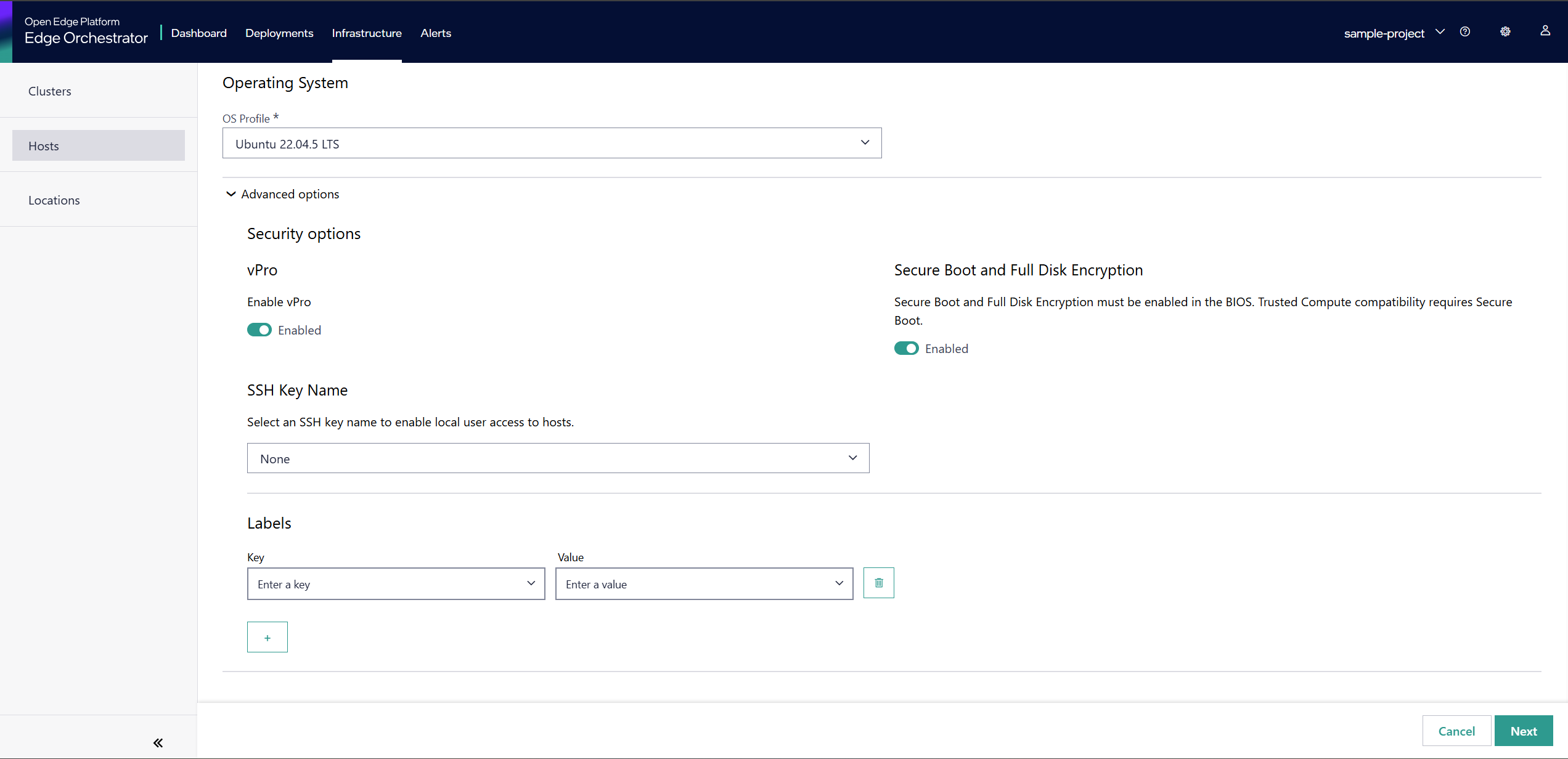Intel® vPro® Power Management#
This guide describes how to use Intel® vPro® features for power management, including activation, performing power operations, and deactivation.
Activation of vPro Power Management#
To use vPro power management features, the device must be provisioned and activated. Provisioning is a prerequisite for activation and enables vPro management capabilities on the device.
Note
1. If the edge node is vPro-enabled, activation of vPro features occurs internally and automatically during device onboarding. No explicit user action is required to trigger vPro activation for supported devices.
2. vPro profiles are currently created using Client Control Mode (CCM). CCM mode support is planned for version 3.1. Support for Admin Control Mode (ACM) is targeted as technical debt for version 3.2.
Enabling vpro while creating host

Assumptions & Recommendations#
- BIOS Enablement: Ensure Intel® vPro® is enabled in the system BIOS. If vPro is not required,
it is recommended to disable it in the BIOS for security and compliance.
- MEBx Password: For enhanced security, set a strong and unique Intel® MEBx password during initial setup.
If the default password is still in use, change it immediately to prevent unauthorized access.
Power Operations#
Once activated, you can perform various power operations such as power on, power off, reset, and cycle. These operations can be managed through the user interface (UI):
UI Power ON/OFF Operations Example:
Clicking ‘Start’ will power on the device, ‘Stop’ will power it off,

UI Power Reset Operations Example:
Clicking ‘Restart’ will Reset the device.

CLI Power Operations Example:
# Power On
orch-cli set host <host-id> --project <project_name> --power on
# Power Off
orch-cli set host <host-id> --project <project_name> --power off
# Reset
orch-cli set host <host-id> --project <project_name> --power reset
Replace <host_id> and <project_name> with your actual host-id and project name.
Check the current power status of the edge node:
To check the power state of a host using the DMT-specific API, use the following curl command:
curl -X "GET" "https://mps-wss.<orch-address>/api/v1/amt/power/state/<HOST_UUID>" \
-H "accept: application/json" \
-H "Authorization: Bearer ${JWT_TOKEN}"
Replace <cluster-name> with your cluster domain name. Replace <HOST_UUID> with the UUID of your host and ensure ${JWT_TOKEN} is set to a valid authentication token.
This API will return the current power state of the specified.
Check the device vPro details of the edge node:
curl -X "GET" "https://mps-wss.<cluster-name>/api/v1/devices/<HOST_UUID>" \
-H "accept: application/json" \
-H "Authorization: Bearer ${JWT_TOKEN}"
Replace <cluster-name> with your cluster domain name. Replace <HOST_UUID> with the UUID of your host and ensure ${JWT_TOKEN} is set to a valid authentication token.
Deactivation of vPro Power Management#
To deactivate vPro management features, the device must be deauthorized. Deauthorizing will deactivate the device and prevent from further management via vPro.
Troubleshooting#
If you encounter issues during activation, power operations, or deactivation, refer to the logs or use the –verbose flag with orch-cli for more details.
For further assistance, consult the official documentation or contact support.